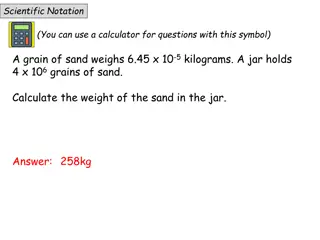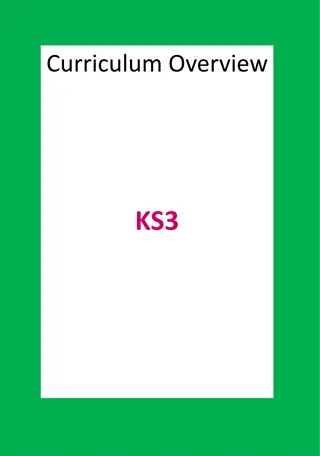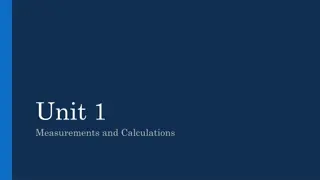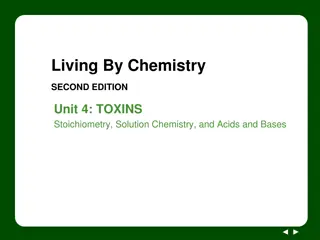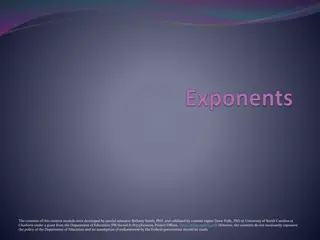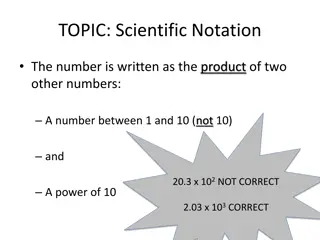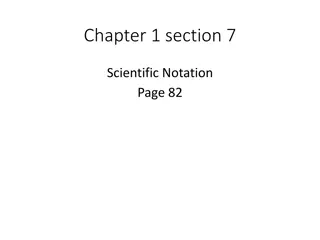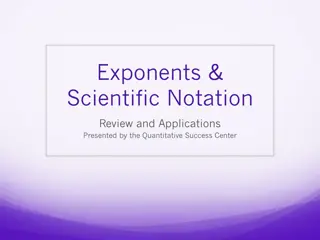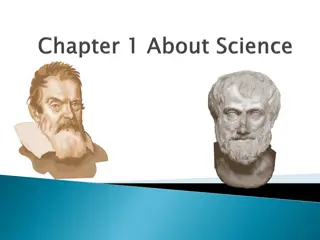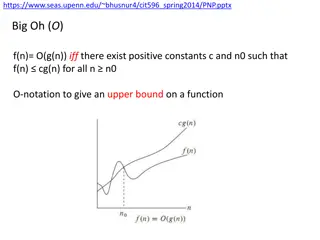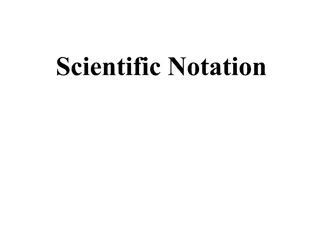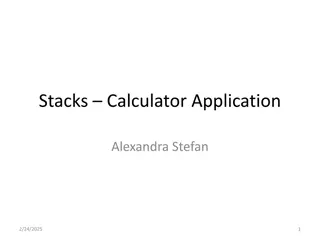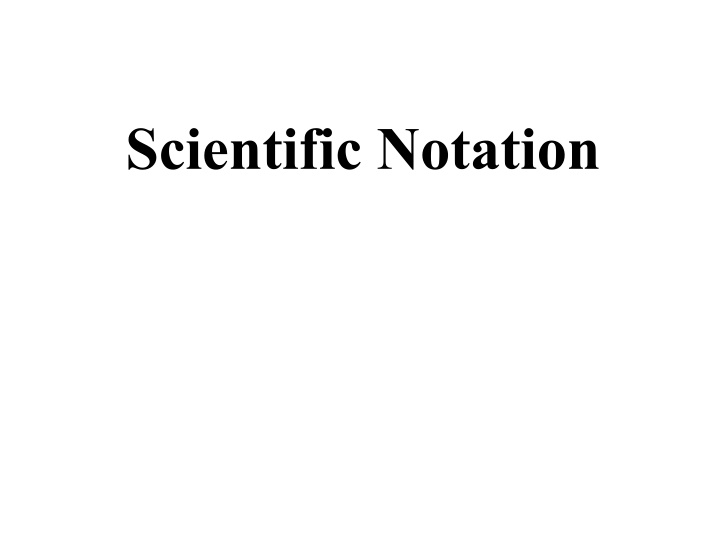
Understanding Scientific Notation and Standard Form
Explore the concept of scientific notation through examples such as expressing large numbers in a more manageable format, moving decimals, converting numbers to standard form, and more. Gain insights on how to write numbers in exponential form and understand the placement of decimal points.
Uploaded on | 9 Views
Download Presentation

Please find below an Image/Link to download the presentation.
The content on the website is provided AS IS for your information and personal use only. It may not be sold, licensed, or shared on other websites without obtaining consent from the author. If you encounter any issues during the download, it is possible that the publisher has removed the file from their server.
You are allowed to download the files provided on this website for personal or commercial use, subject to the condition that they are used lawfully. All files are the property of their respective owners.
The content on the website is provided AS IS for your information and personal use only. It may not be sold, licensed, or shared on other websites without obtaining consent from the author.
E N D
Presentation Transcript
How wide is our universe? 210,000,000,000,000,000,000,000 miles (22 zeros) This number is written in decimal notation. When numbers get this large, it is easier to write them in scientific notation.
Scientific Notation A number is expressed in scientific notation when it is in the form a x 10n where a is between 1 and 10 and n is a whole number
Write the width of the universe in scientific notation. 210,000,000,000,000,000,000,000 miles Where is the decimal point now? After the last zero. Where would you put the decimal to make this number be between 1 and 10? Between the 2 and the 1
2.10,000,000,000,000,000,000,000. How many decimal places did you move the decimal? 23 When the original number is more than 1, the exponent is positive. The answer in scientific notation is 2.1 x 1023
1) Express 0.0000000902 in scientific notation. Where would the decimal go to make the number be between 1 and 10? 9.02 The decimal was moved how many places? 8 When the original number is less than 1, the exponent is negative. 9.02 x 10-8
Write 28750.9 in scientific notation. 1. 2.87509 x 10-5 2. 2.87509 x 10-4 3. 2.87509 x 104 4. 2.87509 x 105
2) Express 1.8 x 10-4in standard form. 0.00018 3) Express 4.58 x 106in standard form. 4,580,000
Write in scientific notation. (Notice the number is not between 1 and 10) 8) 234.6 x 109 2.346 x 1011 9) 0.0642 x 104 on calculator: 642 6.42 x 10 2
Write 531.42 x 105in scientific notation. 1. .53142 x 102 2. 5.3142 x 103 3. 53.142 x 104 4. 531.42 x 105 5. 53.142 x 106 6. 5.3142 x 107 7. .53142 x 108

